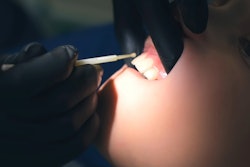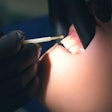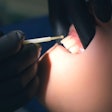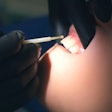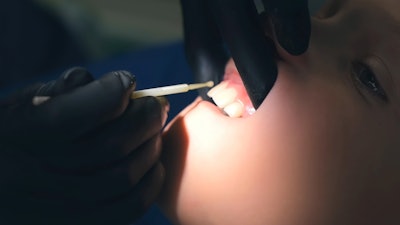
Medicaid-enrolled children who received fluoride varnish as part of the pediatric medical home care model may be more likely to have had their first dental visits sooner. The study was published in the Journal of Public Health Dentistry.
Furthermore, providing preventive oral health services within medical homes may lead to fewer visits for dental treatments related to caries, according to the study.
"By receiving fluoride varnish within the medical home, children were able to connect to a dentist almost an entire year earlier," wrote the authors, led by Dr. Natalie Bussard, MPH, MS, of the Ohio State University College of Dentistry (J Public Health Dent, April 29, 2024).
In Ohio, Medicaid insurance has been a big obstacle for young children to access dental care. Health systems may help enhance the use of preventive oral health services for children, and models like accountable care organizations can boost oral health benefits within pediatric medical care, they wrote.
To explore these challenges, 17,675 children ages 0 to 5 who were continuously enrolled between 2017 and 2021 and had at least one dental procedure claim were included in the study. Dental claims data were obtained from Partners For Kids (PFK), a pediatric accountable care organization covering Medicaid-enrolled children living in 47 counties in Ohio.
The study focused on primary outcomes, including whether a child had a dental visit by age 1 and the age at their first dental visits, and secondary outcomes like different types of dental visits, which were categorized by specific procedure codes, they wrote.
Children who received fluoride varnish at their medical home had their first dental visit at a significantly younger age compared to those who did not (4.1 years versus 4.9 years). On average, fluoride varnish was applied at well-child visits when children were 3.1 years old, the authors wrote.
Additionally, children who had fluoride varnish applied at their medical homes were significantly less likely to require caries-related treatment visits (39.8% versus 58.9%). Almost all children (99%) who received fluoride varnish at their medical home had their caries-related treatment visit after the fluoride varnish application during a well-child visit, according to the results.
However, the study had limitations. PFK primarily serves a rural and Appalachian population. To enhance the applicability of the findings, further research should include a more diverse demographic, the authors wrote.
"Focused efforts to integrate preventive medical and dental care in early childhood hold promise for improving pediatric oral health," Bussard et al wrote.





